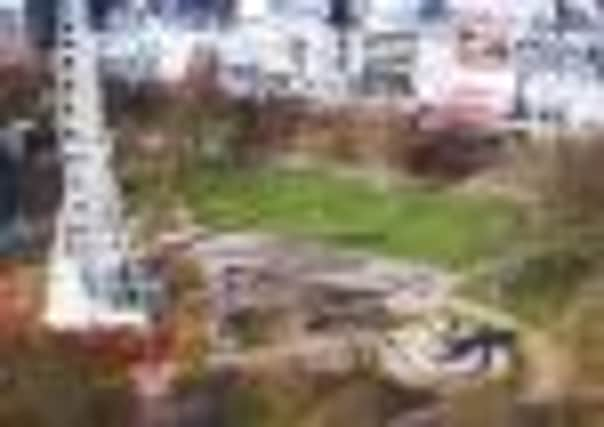Big wheel crane’s weight could collapse gardens


Engineers believe the ceiling of a vacant basement beneath the gardens would not be strong enough to support the huge machine required to set up the 60-metre Wheel of Edinburgh.
Great City Attractions, the firm behind the wheel, had planned to operate the attraction throughout the summer, with up to 1000 passengers per day paying £8 for a 15-minute ride.
Advertisement
Hide AdAdvertisement
Hide AdCouncil insiders said numerous alternative ways for constructing the wheel had been explored, but the options were now almost exhausted and a decision to scrap the project was expected within days.
Council leader Andrew Burns said: “There are ongoing discussions with the developer who was going to bring the wheel to Princes Street Gardens and these have not been finalised yet. There are challenges in terms of getting the structure into the gardens.”
Planning permission had been granted for the firm to run the wheel close to the Ross bandstand from April to October but questions were asked when June arrived without the structure being erected.
The Evening News understands it has proved impossible to find a viable route to get the crane to the site. Engineers fear the National Galleries basement beneath the gardens would not be strong enough for the huge machine to be brought in from The Mound. Contractors are unable to use Princes Street due to the ongoing tram works.
And the firm had to avoid the area around the St Cuthbert’s Church graveyard because of weight limits above the Waverley-Haymarket rail tunnels.
The council had stood to make around £50,000 for leasing the land for the project. However, insiders said it would now potentially face a five-figure bill for a survey of the grounds as it is responsible for the land.
One senior council insider told the News: “The wheel was scheduled to be erected in April or May and then the engineers discovered there is apparently some kind of basement under the gardens which could give way when the crane moved on to it.
“They also don’t know whether there’s another basement below that, which the crane could then land in.
Advertisement
Hide AdAdvertisement
Hide Ad“To go ahead with a project like this we have to be absolutely certain it’s safe so we’re talking about tens of thousands of pounds on a survey, which I suppose the council would have to pick up.”
They added: “There’s a lot of frustration about how it’s come to this point. The homework hadn’t been done and now there might well be technical difficulties which will be insurmountable.
“And this isn’t the only problem, it’s been one thing after another. It’s really getting to the point where it might well be easier just to call it off.”
The city council had expected the wheel to be a huge success after York’s National Railway Museum saw visitor numbers rise from around 750,000 a year prior to a similar wheel being erected to 900,000 visitors in the first year of its operation.
The location of the Wheel of Edinburgh had attracted some criticism from heritage groups, including the Cockburn Association, but West End traders welcomed the move, with promises it would result in £1.4 million extra being spent in local businesses during its six months of operation.
Historic site
Princes Street Gardens’ origins can be traced to 1759 when the man-made Nor Loch was drained. The valley created was initially developed as private garden plots but was designated as a public park in 1876.
Pressure to develop the gardens has always been strong and it was only through Acts of Parliament that they were protected.
Controversy came in 1846 when the city’s central railway was extended. Reflecting the significance of the development, the stone-walled cutting accommodating it was designed by William Playfair.
Within the gardens today are numerous statues and monuments, as well as the Ross Fountain, the Floral Clock and the Ross Bandstand.